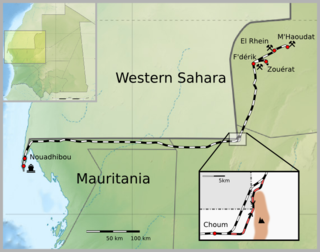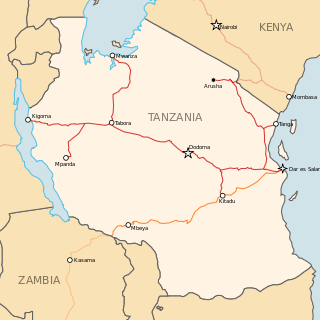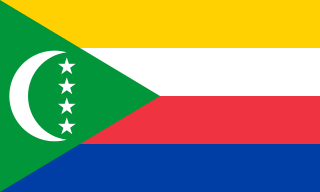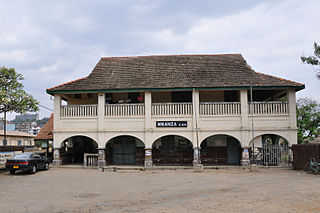There are a number of systems of transport in the Comoros. The Comoros possesses 880 km (547 mi) of road, of which 673 km (418 mi) are paved. It has three seaports: Fomboni, Moroni and Moutsamoudou, but does not have a merchant marine, and no longer has any railway network. It has four airports, all with paved runways, one with runways over 2,438 m (7,999 ft) long, with the others having runways shorter than 1,523 m (4,997 ft).

This page provides an index of articles on rail transport by country.

The Mauritania Railway is the national railway of Mauritania. Opened in 1963, it consists of a single, 704-kilometre (437 mi) railway line linking the iron mining centre of Zouerate with the port of Nouadhibou, via Fderik and Choum. The state agency Société Nationale Industrielle et Minière controls the railway line.

Rail transport in Tanzania is conducted by two companies. It has historically used narrow gauge trackage, but planning and construction of new standard gauge lines is underway as of 2017.
Rail transport in Zambia is primarily provided by two companies:
Rail transport in Kenya consists of a metre-gauge network that is in poor condition and a new standard gauge railway (SGR). Both railways connect Kenya's main port city of Mombasa to the interior, running through the national capital of Nairobi. The metre-gauge network runs to the Ugandan border, and the Mombasa–Nairobi Standard Gauge Railway, backed by chinese loan, is being extended to the Ugandan border as of June 2017.

Rail transport in Madagascar is primarily operated by Madarail,

Portos e Caminhos de Ferro de Moçambique is the parastatal authority that oversees the railway system of Mozambique and its connected ports.

Rail Transport in Tunisia is provided by:

The following outline is provided as an overview of and topical guide to Comoros:
There are several planned railway lines in Rwanda, including a line to Tanzania.
Malawi Railways is the national rail network in Malawi, run by a government corporation until privatisation in 1999. As of 1 December 1999 the Central East African Railways, a consortium led by Railroad Development Corporation, won the right to operate the network.

Railway transport in Somalia consisted of the erstwhile Mogadishu–Villabruzzi Railway and secondary tracks. The system was built during the 1910s by the authorities in Italian Somaliland. Its track gauge was 950 mm, a gauge favoured by the Italians in their colonies in the Horn of Africa and North Africa. The railway was dismantled in the 1940s by the British during their military occupation of Italian Somaliland, and was subsequently never rehabilitated.

The history of rail transport in Namibia began with a small mining rail line at Cape Cross in 1895. The first major railway project was started in 1897 when the German Colonial Authority built the 600 mm gauge Staatsbahn from Swakopmund to Windhoek. By 1902 the line was completed.

The history of rail transport in Tanzania began in the late nineteenth century.
There are as of 2015, no operational railways in Mauritius. A system existed from the 1860s to the 1960s. In 1956 the Mauritius Government Railways had 146 km (91 mi) of 1,435 mm track and 47 locomotives.
The history of rail transport in the Central African Republic is limited to a now closed short railway line, and two proposed railway projects that were not implemented.
The history of rail transport in Burundi is limited to a now closed industrial railway, and a number of proposed railway projects that, as of 2012, had not been implemented.
The history of rail transport in Rwanda is limited to three industrial railways, and a number of proposed railway projects that, as of 2012, had not been implemented.

The history of rail transport in Malawi began shortly after the turn of the twentieth century.













